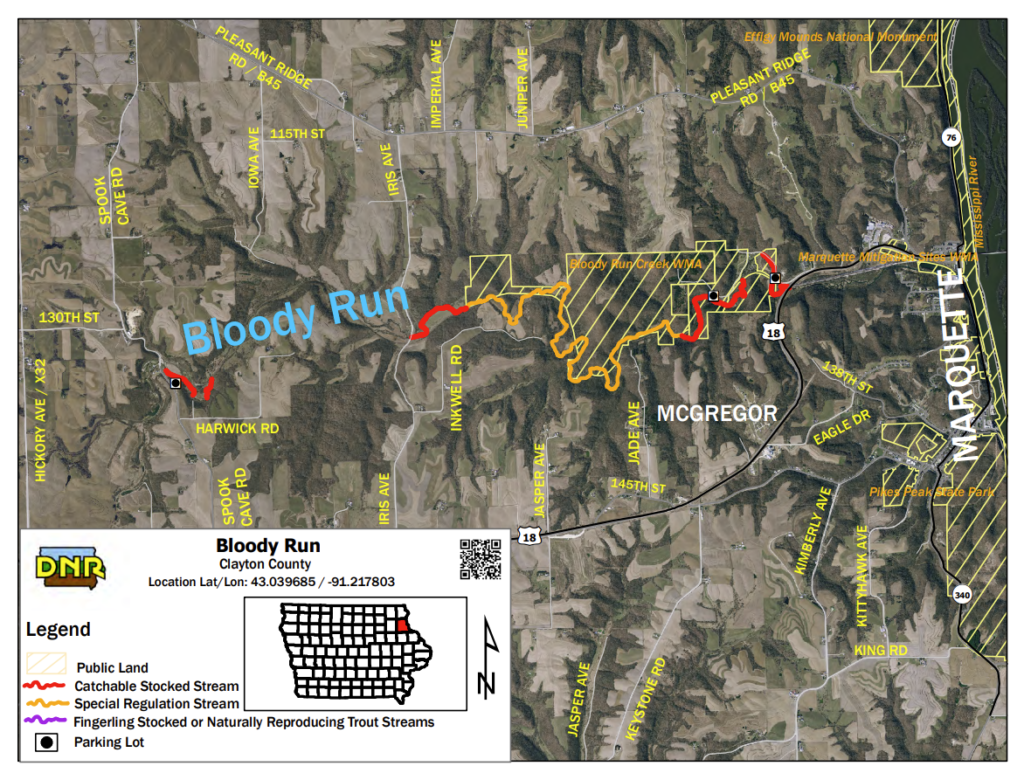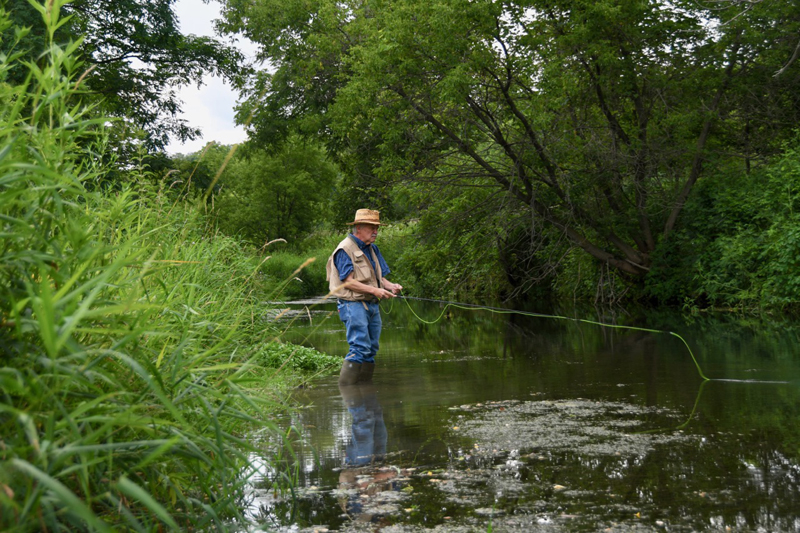The History of Bloody Run Creek and Trout
With a thriving population of naturally reproducing brown trout, supplemented by Iowa DNR stocking of 10,000 rainbow and brook trout annually, Bloody Run Creek is among the top 10 of Iowa’s 80-plus trout waters, and one of the cleanest streams in the state.
Link to DNR’s Bloody Run Creek information.
A 2016 survey estimated nearly 18,000 fishing trips to Bloody Run, which the U. S. Fish and Wildlife Service calculated to bring more that $800,000 in economic benefits to the region.
About 6.5 miles of stream include private land, public walk-in areas, and a zone restricted to artificial lures and a 14-inch minimum size on brown trout, along with a county park with easy access for anglers with limited mobility. Thus, different segments of the stream appeal to purist dry-fly fishermen and fisherwomen, as well as lawn chair bobber-and-worm trout seekers.
The Iowa DNR’s 1,120-acre Bloody Run Wildlife Management Area includes several miles of the wild creek valley, while Clayton County’s 135-acre Bloody Run County Park protects a lower stretch bordering a popular campground. The DNR also recently acquired an easement providing better fishing access just downstream from the privately owned Spook Cave and Campground.
The state and county have invested heavily in protecting Bloody Run Creek and improving the fishing and access. State land acquisitions over the decades have totaled about $1.17 million. Stream improvements have cost another $200,000. The actual cost of producing and stocking a trout is about $2.70, meaning the DNR spends about $27,000 annually to stock Bloody Run.
If fish should be killed by pollution or illegal fishing, the replacement value and the loss of recreational opportunities is about $15 per fish, according to the American Fisheries Society.
It’s hypocritical, and an affront to Iowans, for one branch of the Iowa DNR to work to protect Bloody Run and provide public access, while a separate division of the agency approves a livestock facility that could jeopardize that fragile natural resource.

